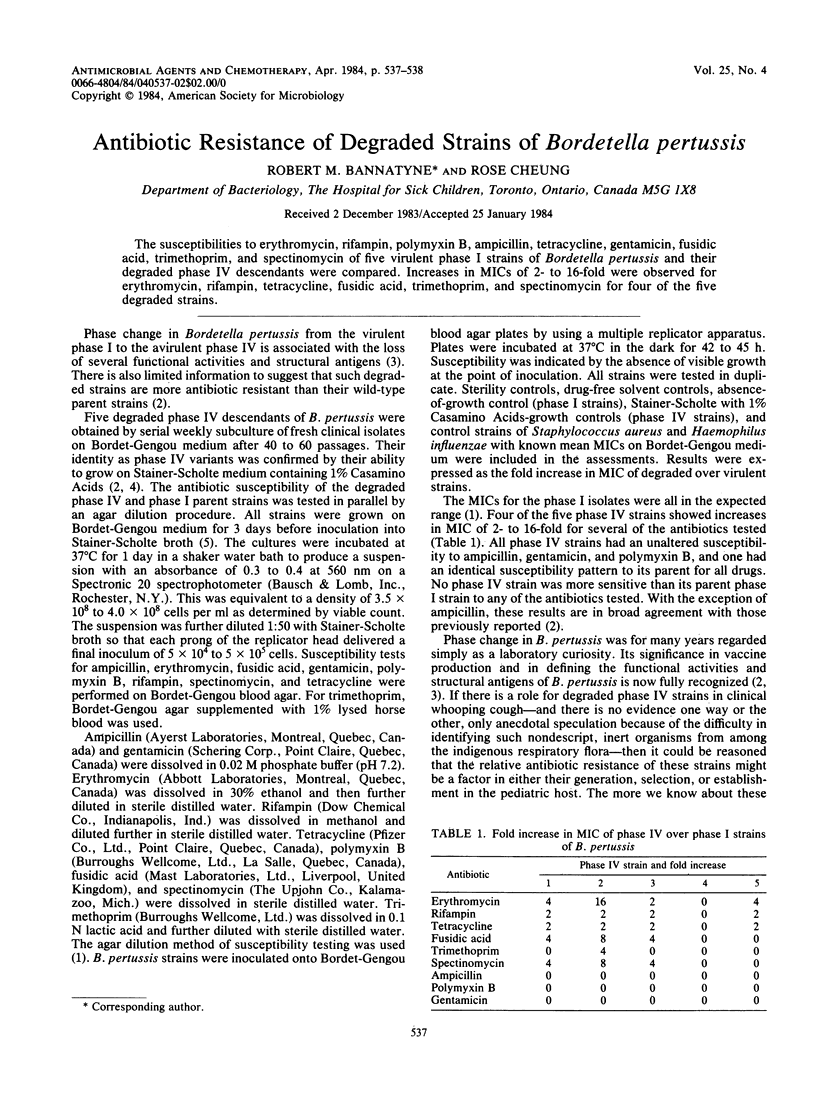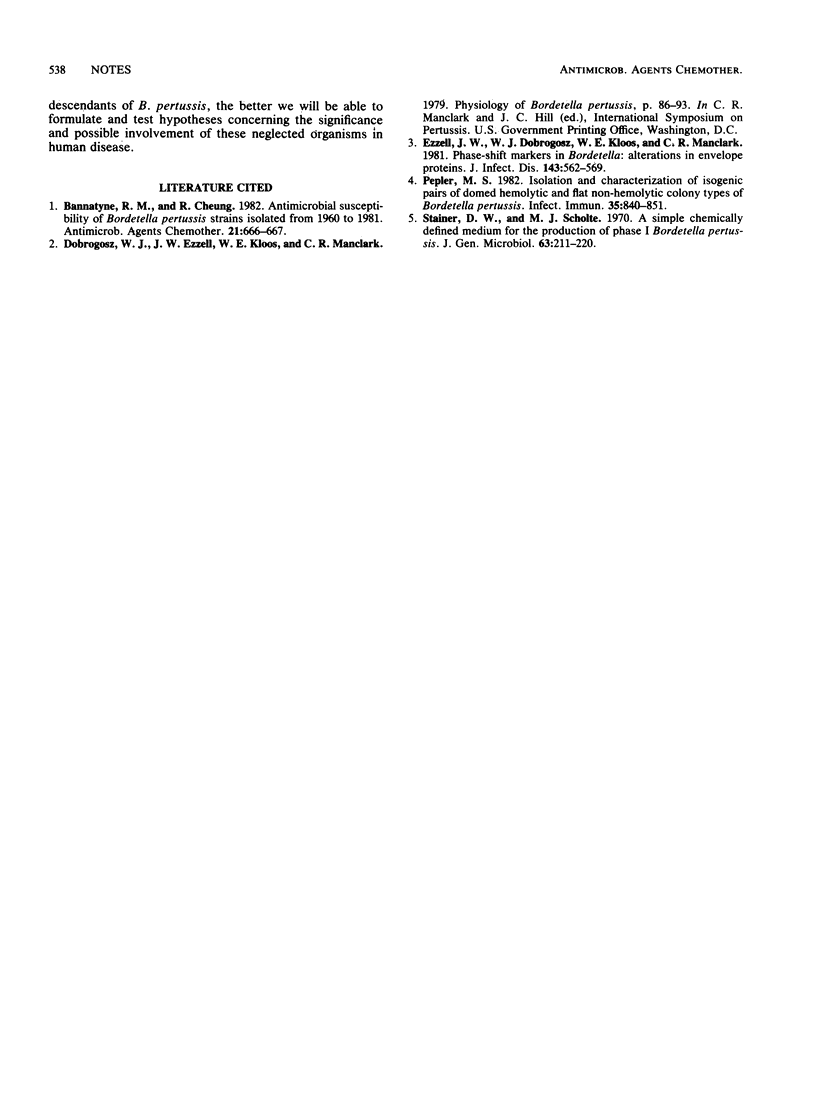Abstract
The susceptibilities to erythromycin, rifampin, polymyxin B, ampicillin, tetracycline, gentamicin, fusidic acid, trimethoprim, and spectinomycin of five virulent phase I strains of Bordetella pertussis and their degraded phase IV descendants were compared. Increases in MICs of 2- to 16-fold were observed for erythromycin, rifampin, tetracycline, fusidic acid, trimethoprim, and spectinomycin for four of the five degraded strains.
Full text
PDF

Selected References
These references are in PubMed. This may not be the complete list of references from this article.
- Bannatyne R. M., Cheung R. Antimicrobial susceptibility of Bordetella pertussis strains isolated from 1960 to 1981. Antimicrob Agents Chemother. 1982 Apr;21(4):666–667. doi: 10.1128/aac.21.4.666. [DOI] [PMC free article] [PubMed] [Google Scholar]
- Ezzell J. W., Dobrogosz W. J., Kloos W. E., Manclark C. R. Phase-shift markers in Bordetella: alterations in envelope proteins. J Infect Dis. 1981 Apr;143(4):562–569. doi: 10.1093/infdis/143.4.562. [DOI] [PubMed] [Google Scholar]
- Peppler M. S. Isolation and characterization of isogenic pairs of domed hemolytic and flat nonhemolytic colony types of Bordetella pertussis. Infect Immun. 1982 Mar;35(3):840–851. doi: 10.1128/iai.35.3.840-851.1982. [DOI] [PMC free article] [PubMed] [Google Scholar]
- Stainer D. W., Scholte M. J. A simple chemically defined medium for the production of phase I Bordetella pertussis. J Gen Microbiol. 1970 Oct;63(2):211–220. doi: 10.1099/00221287-63-2-211. [DOI] [PubMed] [Google Scholar]


